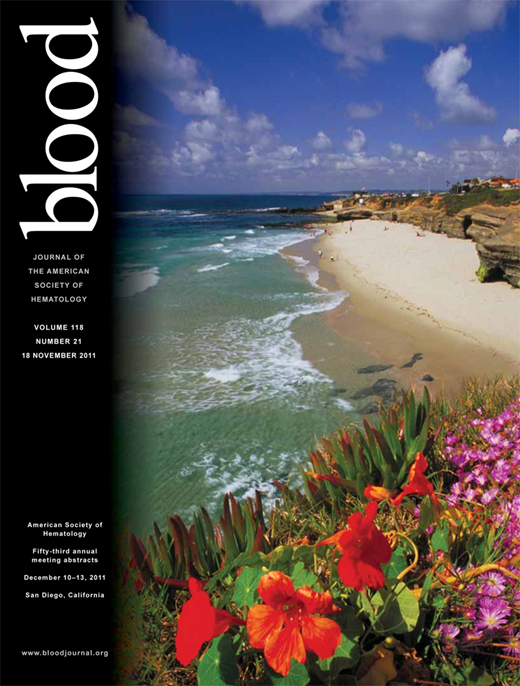Abstract
Abstract 3232
Osteoactivin, also known as transmembrane glycoprotein NMB (GPNMB) and dendritic cell-associated transmembrane protein (DC-HIL), is a type I transmembrane glycoprotein that is detected abundantly in dendritic cells (DC), but not or only at low levels in monocytes. Its expression on antigen-presenting cells (APC) can inhibit T cell activation by binding the type I transmembrane proteoglycan syndecan-4 (SD-4) on T cells. We here studied the influence of different therapeutically used immunosuppressive agents such as the corticosteroid prednisolone and the calcineurin inhibitors tacrolimus or cyclosporine A on the expression of osteoactivin in human monocyte-derived DC. Therefore, DC were generated from blood monocytes isolated by plastic adherence and exposed to GM-CSF and IL-4. Prednisolone, tacrolimus or cyclosporine A were added to the culture medium at concentrations obtained upon clinical application in patients (cyclosporine A: 1μg/ml, prednisolone: 3.5μg/ml, tacrolimus: 10ng/ml) every second day starting from the first day of culture. Cells were harvested for immunophenotyping and osteoactivin expression analysis by immunostaining, western-blotting and real-time RT-PCR or for functional analyses in mixed lymphocyte reactions (MLR) on day 7 of culture. DC generated in the presence of therapeutic concentrations of the immunosuppressant drugs showed a reduced expression of CD1a. Furthermore, we observed a clear upregulation of osteoactivin on DC that had been treated with the immunosuppressive agents. In line with osteoactivin up-regulation, exposure to the immunosuppressive drugs resulted in reduced stimulatory capacity of the DC in MLR with allogenic T cells, and this could be restored by addition of blocking osteoactivin antibody. In summary, our results demonstrate that upregulation of osteoactivin is critically involved in the inhibition of DC function upon exposure to different classes of immunosuppressive agents. These findings suggest that upregulation of osteoactivin in DC constitutes a ubiquitous mechanism that may underlie inhibition of T cell activation by these drugs.
No relevant conflicts of interest to declare.
Author notes
Asterisk with author names denotes non-ASH members.

